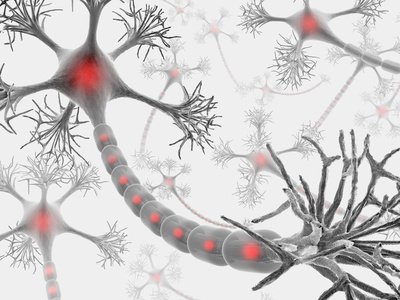Gabapentin, a medication originally developed to treat seizures, has emerged as a valuable tool in managing neuropathic pain. Neuropathic pain, a complex and often debilitating condition resulting from nerve damage or dysfunction, presents a significant challenge for patients and healthcare providers alike. In this article, we will explore the role of Gabapentin, specifically in its 300mg dosage form, in alleviating neuropathic pain. From understanding the mechanism of action to examining its efficacy, potential side effects, and dosage considerations, we will delve into how Gabapentin can offer relief and improve quality of life for individuals suffering from neuropathic pain
How Gabapentin 300mg Can Help in Treating Neuropathic Pain
Introduction to Gabapentin and Neuropathic Pain
Neuropathic pain, a complex chronic condition resulting from nerve damage or dysfunction, can be challenging to manage. Gabapentin, a medication originally developed to treat seizures, has gained popularity for its effectiveness in relieving neuropathic pain. This article explores how Gabapentin 300mg can be a valuable treatment option for individuals suffering from this debilitating condition.
Overview of Neuropathic Pain Conditions
Neuropathic pain encompasses a range of conditions such as diabetic neuropathy, post-herpetic neuralgia, and nerve compression injuries. Characterized by shooting pain, tingling sensations, and hypersensitivity, this type of pain can significantly impact a person’s quality of life. Gabapentin belongs to a class of medications known as anticonvulsants and works by stabilizing electrical activity in the brain. While its precise mechanism in managing neuropathic pain is still not fully understood, Gabapentin has shown promising results in reducing nerve-related discomfort and improving overall pain control.
Mechanism of Action of Gabapentin in Managing Neuropathic Pain
To effectively alleviate neuropathic pain, it is crucial to understand the underlying mechanisms that contribute to this condition.
Understanding Neuropathic Pain Pathophysiology
Neuropathic pain arises from abnormalities in the nervous system, leading to faulty signaling between nerves and the brain. This dysfunctional communication results in exaggerated pain responses and altered sensory perceptions, making everyday activities challenging for individuals experiencing such discomfort.
How Gabapentin Targets Nerve Pain Mechanisms
Gabapentin exerts its therapeutic effects by modulating calcium channels in the brain, ultimately reducing the release of pain-transmitting neurotransmitters. By dampening aberrant nerve signaling, Gabapentin helps alleviate neuropathic pain and improve overall pain management.
Efficacy of Gabapentin 300mg Dosage in Neuropathic Pain Relief
Numerous studies and clinical trials have demonstrated the efficacy of Gabapentin, particularly when administered at a dosage of 300mg, in providing relief for neuropathic pain.
Studies and Clinical Trials Supporting Gabapentin’s Effectiveness
Research has shown that Gabapentin, especially when dosed at 300mg, can effectively reduce pain intensity, improve sleep quality, and enhance daily functioning in individuals with neuropathic pain conditions. These findings highlight the drug’s potential as a valuable treatment option for those struggling with chronic nerve-related discomfort.
Optimal Dosage Regimen and Treatment Duration
When considering Gabapentin therapy, healthcare providers often tailor the dosage and treatment duration to the individual’s specific needs. Starting with a lower dose and gradually titrating upwards can help minimize side effects while maximizing pain relief. Regular monitoring and assessment are essential to ensure the medication’s continued efficacy.
Side Effects and Considerations of Gabapentin Therapy
While Gabapentin is generally well-tolerated, it is essential to be aware of potential side effects and precautions associated with its use.
Common Side Effects of Gabapentin 300mg
Some individuals may experience side effects such as dizziness, drowsiness, and gastrointestinal disturbances when taking Gabapentin. These symptoms are usually mild and transient, but if persistent or severe, medical advice should be sought.
Precautions and Contraindications for Gabapentin Use
Individuals with a history of renal impairment, substance abuse disorders, or hypersensitivity reactions should exercise caution when using Gabapentin. Additionally, potential drug interactions and contraindications should be thoroughly reviewed before initiating therapy to ensure safe and effective pain management.
In conclusion, Gabapentin 300mg can be a valuable ally in the battle against neuropathic pain, offering relief and improved quality of life for individuals grappling with this challenging condition. By understanding its mechanism of action, optimal dosage regimen, and potential side effects, patients and healthcare providers can work together to harness the benefits of this medication while minimizing risks.
Dosage Administration and Monitoring Protocols for Gabapentin Use
Guidelines for Starting and Titrating Gabapentin Dosage
So, you’ve got your hands on some Gabapentin 300mg, nice! When starting this journey, it’s usually recommended to begin with a low dose to avoid side effects, like feeling a bit woozy. The dose is then gradually increased over time to find that sweet spot where your pain is managed without making you see unicorns.
Importance of Regular Monitoring and Adjustments
Just like keeping your plants watered, monitoring your Gabapentin use is crucial. Regular check-ins with your healthcare provider can help ensure you’re on the right track. They can make adjustments to your dosage if needed, so you don’t have to feel like a detective trying to crack the case of your pain relief all on your own.
Comparing Gabapentin with Other Treatment Options for Neuropathic Pain
Overview of Alternative Medications for Neuropathic Pain
Now, let’s talk about the competition. Gabapentin isn’t the only player in the field of neuropathic pain relief. There are other medications out there, each with its own strengths and weaknesses. It’s like choosing between different flavors of ice cream, except in this case, the stakes are slightly higher than brain freeze.
Comparative Analysis of Gabapentin’s Benefits and Limitations
Gabapentin, oh Gabapentin, what are your pros and cons? Well, this medication can be a real champ in managing neuropathic pain for some folks. But hey, it’s not a one-size-fits-all solution. Like a pair of jeans that either make you feel like a million bucks or a potato sack, Gabapentin has its benefits and limitations too.
Patient Education and Counseling on Gabapentin for Neuropathic Pain Management
Key Information to Communicate to Patients About Gabapentin
Time for some patient education! Knowing the ins and outs of Gabapentin can empower you in managing your pain. From understanding how it works to knowing what to expect, arming yourself with knowledge is like having a secret weapon in your pain-fighting arsenal.
Importance of Adherence and Reporting Side Effects to Healthcare Providers
Adherence is key, my friend. Taking Gabapentin as prescribed can make a real difference in how well it works for you. And hey, if you experience any side effects that make you raise an eyebrow, don’t keep it to yourself. Your healthcare provider is like your trusty sidekick, ready to swoop in and save the day by adjusting your treatment plan.In conclusion, Gabapentin 300mg stands as a promising option for individuals grappling with neuropathic pain. By targeting the underlying mechanisms of nerve pain and providing effective relief, this medication offers hope for improved pain management and enhanced well-being. As healthcare providers continue to explore and optimize the use of Gabapentin in treating neuropathic pain, patients are encouraged to engage in open communication, adhere to prescribed regimens, and seek ongoing support for a comprehensive approach to holistic pain management.









